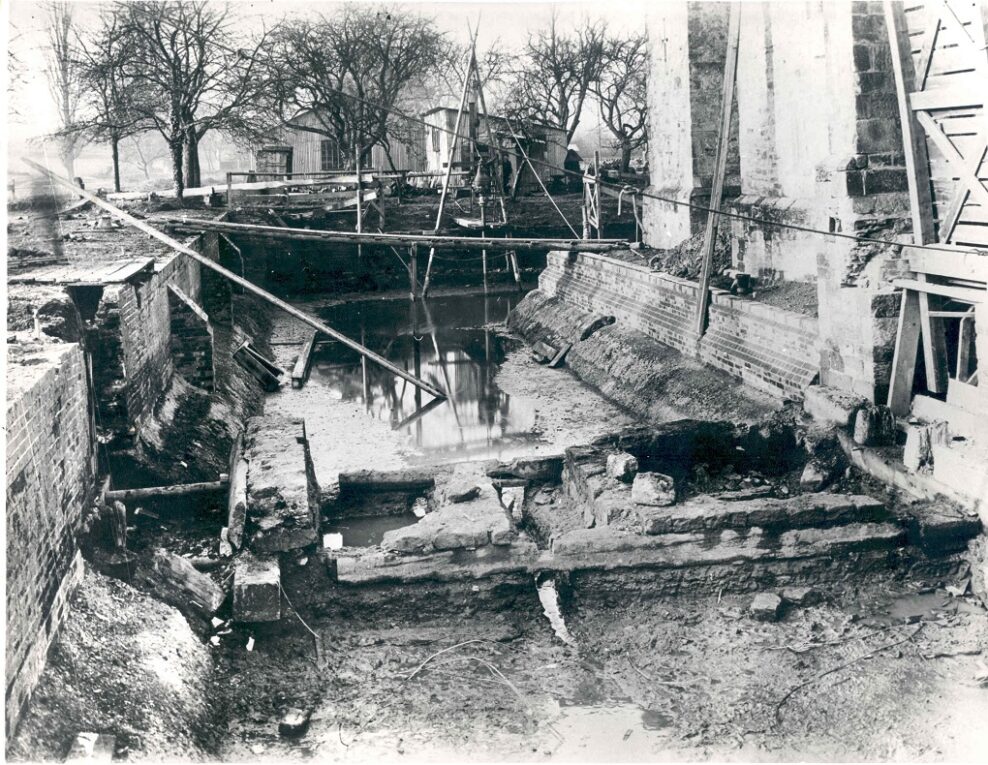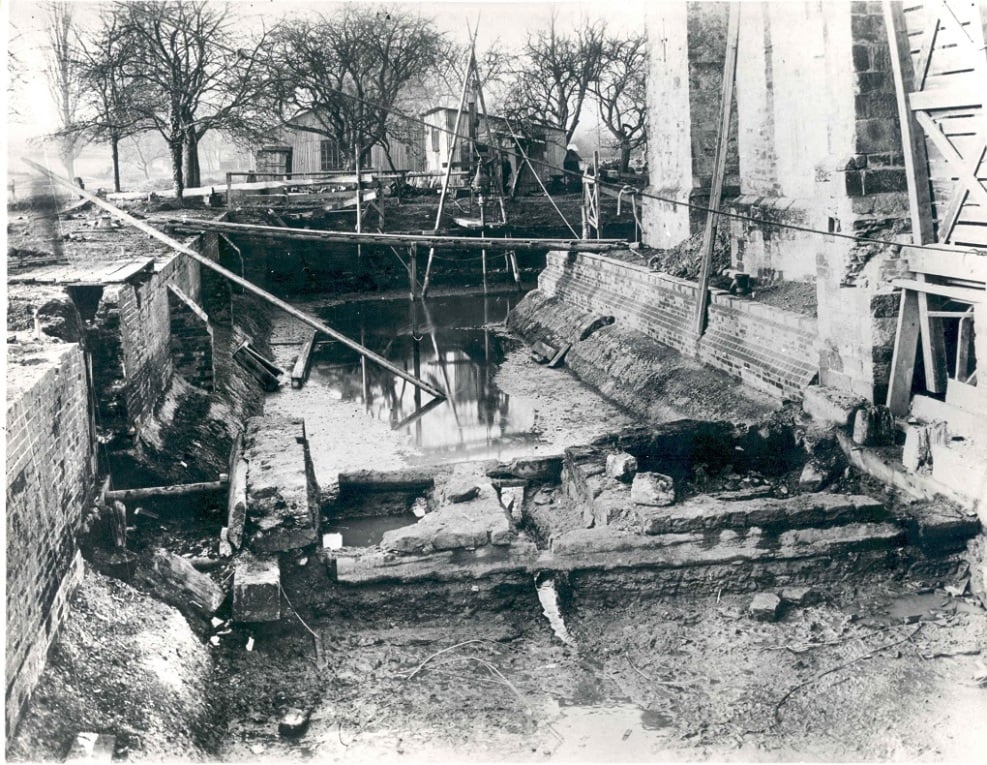

Above: 1904, showing the walls of the Castle covered by scaffolding and the moat emptied of water
The theme for this week’s #Feature Fridays with Historic Houses is architects.
While many individuals have had a hand in creating the Hever Castle we know and love today, one of the most influential was the architect Frank Loughborough Pearson, who oversaw the 1903-1908 Hever restoration project for then owner William Waldorf Astor.
Pearson had been born in London in 1864 to a family that was already involved in the architectural world. His father, John Loughborough Pearson, was also an architect, and his mother’s cousin, Ewan Christian, was the President of the Royal Institute of British Architects. It is perhaps therefore no surprise that Frank was inexorably drawn into the family trade himself, and even less of a surprise that was to find himself working for the Astors, given that it was his father John who helped William Waldorf with the remodelling of his other country estate, Cliveden, in Berkshire.
In the late Victorian period, many architects made their living from the restoration of gothic churches, and Pearson is no exception, having worked on several churches in Scotland before starting work on Hever Castle, which included the creation of the formal gardens, and the buildings that are now the luxury Bed and Breakfast, and Medley Court self catering holiday cottage.
Just opposite the main gate however, outside the boundary of Hever Castle but linked to it by centuries of worship, is St. Peter’s Church, which is the burial place of Thomas Boleyn. The building itself is medieval, but sits on the site of an earlier Norman church.
The Normans were known for being great builders and were responsible for bringing castles to England, replacing the traditional Saxon hill forts. Castles were seen as vital to protect the new Norman landowners and clergy from the recently defeated Saxon populace, and as a result, more and more stone built fortifications started to spring up. First in a ring around London, and then across the rest of the country. Churches too began to be rebuilt in stone, and it is here that we meet Bishop Gundulf, one of the most important Norman architects, whose designs (which included the White Tower at the Tower of London, and Kent’s own Rochester Cathedral) inspired many of the defensive buildings that followed it.
As an architect who had worked extensively on gothic churches therefore, Pearson was the perfect choice to help with the restoration of Hever Castle, which is itself, in its oldest sections, a gothic building.
The modern day Hever Castle you see today therefore, is an interesting and entirely unique blend of original Tudor and medieval features, Astor’s love of historical detail, and Pearson’s skillful use of stonework, half timbering and panelled interiors.
Not only that, but Hever Castle also contains columns that link back to the clean, simplistic principles of Ancient Greek and Roman architecture, the highly decorative floral carvings and designs of the Restoration period, and the easily identifiable red brick of the Victorian and Edwardian era, meaning that Hever Castle is not just a melting pot for the ideas of the individuals who worked on it in 1903, but also the thousands of years of architectural style, growth and influence that preceded them.
If you enjoyed this item on literature then why not discover the previous #Feature Fridays news items.
Book your visit to Hever Castle & Gardens.
Within the grounds of the Hever Castle Estate, there are two opportunities for you to stay the night with us.
Hever Castle has played host to many important events and celebrations for over 600 years. In 1903 when William Waldorf Astor set about restoring Hever Castle to its former glory, he added the Astor Wing, to accommodate his family and guests, before creating a lake and the spectacular Italian Garden to house his impressive collection of ancient Greek and Roman statuary.
There are multiple places to eat & drink across the Hever Castle Estate. Select between the Castle & Gardens and Golf Club below to discover more.
Set in the mature grounds of the Hever Castle Estate, Hever Castle Golf Club is a 27 hole Kent golf course that will encourage and inspire all golf enthusiasts.
Set in the mature grounds of the Hever Castle Estate, the Wellbeing Centre consists of five smart treatment rooms.